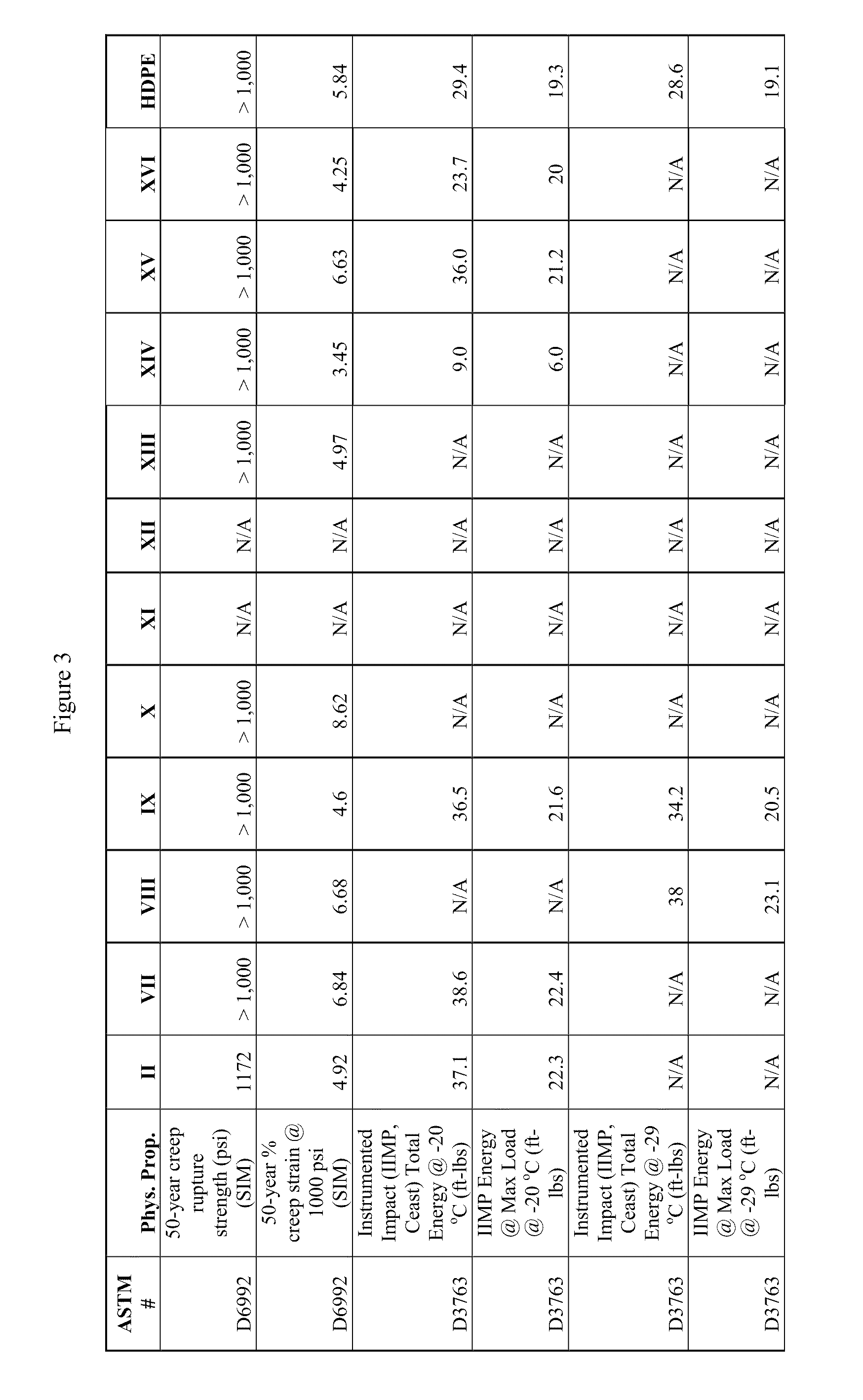Polypropylene composition for buried structures
a technology of polypropylene and buried structures, which is applied in the field of polypropylene composition for buried structures, can solve the problems of slow adoption of polypropylene non-pressure pipes in the united states, metal pipes are susceptible to corrosion, and each of these materials is susceptible to the environment in which it resides, and achieves superior long-term creep properties, improved processing efficiency, and improved stability
- Summary
- Abstract
- Description
- Claims
- Application Information
AI Technical Summary
Benefits of technology
Problems solved by technology
Method used
Image
Examples
Embodiment Construction
Definitions & Abbreviations
[0063]In accordance with this detailed description, the following abbreviations and definitions apply. It must be noted that as used herein, the singular forms “a”, “an”, and “the” include plural referents unless the context clearly dictates otherwise. Thus, for example, reference to “a resin” includes a plurality of such resins and reference to “the resin” includes reference to one or more resins and equivalents thereof known to those skilled in the art, and so forth.
[0064]As used herein the phrase “propylene polymer” refers to a propylene homopolymer or to an ethylene propylene random copolymer having, in certain embodiments, less than 1.5 weight percent ethylene, and in other embodiments, less than 1 weight percent ethylene. In the context of an impact copolymer, the propylene polymer may be referred to as the “matrix.”
[0065]Unless defined otherwise, all technical and scientific terms used herein have the same meaning as commonly understood by one of or...
PUM
| Property | Measurement | Unit |
|---|---|---|
| polydispersity index | aaaaa | aaaaa |
| weight percent | aaaaa | aaaaa |
| creep strain | aaaaa | aaaaa |
Abstract
Description
Claims
Application Information
 Login to View More
Login to View More - R&D
- Intellectual Property
- Life Sciences
- Materials
- Tech Scout
- Unparalleled Data Quality
- Higher Quality Content
- 60% Fewer Hallucinations
Browse by: Latest US Patents, China's latest patents, Technical Efficacy Thesaurus, Application Domain, Technology Topic, Popular Technical Reports.
© 2025 PatSnap. All rights reserved.Legal|Privacy policy|Modern Slavery Act Transparency Statement|Sitemap|About US| Contact US: help@patsnap.com



